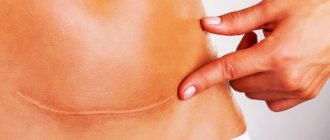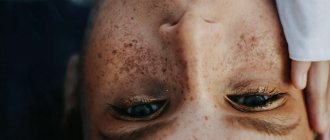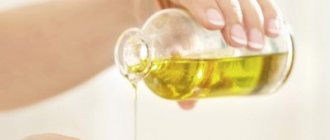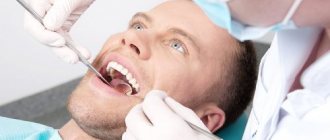Any punctured, chopped, torn or cut wound can be complicated by the process of suppuration. Even if you cut your finger with a knife in the kitchen, you should not think that this is a trifle, because an insufficiently treated wound can fester. Everyone should know the first symptoms of wound suppuration for the reason that in most cases this problem has to be solved exclusively by surgery.
This problem is especially relevant for those who have undergone any surgery and were discharged home after rehabilitation. If postoperative sutures are not cared for at home as prescribed by the doctor, then if an infection occurs, suppuration may begin. Contrary to the generally accepted opinion of patients, suppuration after operations begins not because of the conditions during the operation, but precisely due to the fault of patients who irresponsibly approach the doctor’s prescriptions when they find themselves at home.
During surgery, it is essential to maintain absolute sterility, and this principle is never violated. Medical doctors recommend that you always fully follow the prescriptions they make to avoid such serious complications.
The wound must be clean
In a purulent wound there may be scabs, necrosis, crusts, fibrin (this is yellow dense tissue on the wound), then such a wound must be cleaned. Cleansing can be achieved using Neofix FibroGel AG, IntraSite Gel and IntraSite Conformable hydrogels. The main purpose of these gels is to moisten necrosis and crusts, loosen them, which facilitates easier removal of necrosis during subsequent dressings. Hydrogels are applied directly to the wound in sufficient quantities so that the wound is completely covered with hydrogel; the hydrogel layer must be at least 5 mm. Next, the wound must be covered with a film dressing, for example OpSite Flexigrid, or one of the postoperative dressings OpSite Post-Op, PRIMAPORE, NEOFIX Post. On top of the gels, you can use absorbent dressings Allevyn Adhesive or Allevyn Sacrum, which are preferable and more convenient to use in the treatment of bedsores, since these dressings have a sticky edge and a soft spongy pad. After a maximum of three days, it is necessary to bandage, remove the hydrogel from the surface of the wound, and along with it the softened necrosis and crusts. If there are areas of necrosis or stupa remaining in the wound, then it is necessary to use the hydrogel more than once until the wound is completely cleansed. The advantage of using the antimicrobial hydrogel Neofix FibroGel AG for these purposes is that this hydrogel contains silver. This antimicrobial component fights any infectious agents in the wound. As a result of the use of hydrogels, the wound is cleaned. Dressings must be carried out at least once every 1-3 days, and preferably under the supervision of the attending physician.
Suture after cesarean section, fluid oozing: reasons
But not everything depends on the surgeons; the patient’s health status matters. That is why, before surgery, a series of studies and tests are prescribed. The likelihood of seroma occurring increases in such cases.
Suture after cesarean section, fluid oozing, reasons:
- Diabetes
- High pressure
- Excess weight
- Poor blood clotting
- The presence of a large amount of fat and subcutaneous tissue
In approximately 70% of cases, complications occur in overweight people. If the amount and thickness of adipose tissue is more than 5 cm, most likely, seroma formation will occur in the incision area and a large amount of fluid will be released. That is why, in some cases, patients are advised to lose weight before undergoing surgery, prescribed a diet, or undergo liposuction in emergency cases. If a person has high blood pressure, taking blood pressure-lowering medications is also recommended.
The infection must be suppressed
To combat infection in a wound, it is best to use ACTICOAT and ACTICOAT7 dressings. These are mesh absorbent dressings that allow unimpeded drainage of exudate from the wound and fight infection. These dressings contain silver. The antibacterial activity of silver has been known for many years and its effectiveness is beyond doubt. The activity of silver is not affected by the presence of blood and pus in the wound. All causative agents of wound infections, including antibiotic-resistant bacteria, are not resistant to silver. Silver has a universal, wide spectrum of action, including against mixed microflora containing various bacteria, fungi, and yeast. The use of dressings with silver leads to rapid suppression of the inflammatory reaction in the wound, and at the same time the amount of discharged exudate decreases.
It is important that the silver in ACTICOAT and ACTICOAT7 dressings begins to be released immediately as soon as the dressing is applied to the wound, and quickly, within the first 30 minutes, the necessary concentration of silver is achieved in the wound to fight infection, and this concentration of silver is maintained at a constant level throughout long-term - up to 3 days when using ACTICOAT dressings and up to 7 days when using ACTICOAT7 dressings, thereby ensuring long-term antibacterial activity of the dressings, so the ACTICOAT dressing can be on the wound for up to 3 days, and the ACTICOAT7 dressing up to 7 days, with external absorbent dressings (gauze or Allevyn sponge) must be changed daily.
Use an acticoate dressing to effectively fight infection.
Why is fluid with blood oozing from the suture?
Surgeons believe that a high degree of damage to blood and lymphatic vessels leads to the formation of seroma. That is why it is necessary to try to keep the intervention area as small as possible. It is for this purpose that many operations on the abdominal cavity using laparoscopy are now practiced.
This intervention makes rehabilitation quick and reduces the patient’s stay in the hospital. But there are cases when it is impossible to perform the operation using laparoscopy. This occurs in emergency cases when there is a rupture of appendicitis, spleen, trauma or cesarean section.
Why is fluid with blood oozing from the suture:
- Serous fluid often appears in cases of cesarean section or abdominoplasty. In this case, the seam is usually very large, which provokes the appearance and accumulation of fluid in the incision area.
- If the fluid is not pumped out in time, a fistula appears through which it comes out. Very often, such tissue becomes the cause of suppuration; this is an excellent environment for the development of infection. The serous fluid itself does not contain infection, but the suture is an entry point for pathogenic microorganisms. Accordingly, improper care of the postoperative suture often causes the development of suppuration and sepsis.
- If a weeping wound does not go away within 20 days, you must contact a doctor for surgical treatment or vacuum extraction of fluid. It is usually removed with a syringe under pressure, which allows approximately 600 ml of liquid to be pumped out at a time. Usually the manipulation is carried out after 3 days until all the serous fluid ceases to be released.
Suture after surgery
Excess exudate
If there are no crusts or necrosis in the wound, then the technique of local negative pressure can be used for active outflow of exudate. For these purposes, the PICO wound treatment device is used, which creates a constant outflow of purulent exudate from the wound, which is accompanied by a decrease in tissue swelling, a decrease in the number of bacteria in the wound, as a result, the inflammatory reaction subsides, and the growth of new tissues begins, the vessels that fill the wound begin the epithelium grows, the edges of the wound gradually come closer together and the wound heals. When using this device, there is no need to carry out dressings daily. It is enough to change the dressings on average once every three days.
For passive drainage of exudate from the wound, absorbent dressings of your choice are used:
- Carbonet. This multi-layer dressing perfectly absorbs viscous purulent exudate, and, thanks to a layer of activated carbon, absorbs the odor that often accompanies purulent wounds. Since Carbonet does not contain antimicrobial components, dressings on purulent wounds must be changed daily.
- NEOFIX polyurethane sponge dressings with silver - NEOFIX FibroSorb AG and NEOFIX FibroSorb AG Sacrum. Silver in dressings provides antimicrobial effect.
Sponge dressings absorb liquid exudate and retain it in their structure even under pressure, for example, under compression bandages or underwear (stockings, stockings, tights), which are one of the main attributes of the treatment of trophic venous ulcers. NEOFIX FibroSorb AG sponge dressing
without adhesive edge is indicated for wounds where the skin around which is damaged.
Such a bandage requires additional fixation with a bandage or adhesive roll bandages NEOFIX ROLL, or OpSite Flexifix, always only around the perimeter, without covering its central part with adhesive patches. This is necessary to prevent maceration of the skin and wound. NEOFIX FibroSorb AG Sacrum bandage
with a sticky edge, specially shaped for fixation in the sacrum area, while the skin around the wound should be dry and healthy, without any disturbances. The bandage protects the wound from the ingress of urine, feces, as well as from the penetration of external liquids during hygiene procedures.
When using NEOFIX FibroSorb AG and NEOFIX FibroSorb AG Sacrum dressings for wound treatment, there is no need to change dressings daily. It is recommended to change the dressing once every 2-3 days, depending on the degree of filling of the dressing with exudate.
A viscous liquid is oozing from the seam, what should I do?
Prevention of seroma, fluid accumulation, is the use of antibiotics, non-steroidal anti-inflammatory drugs, as well as appropriate antiseptic treatment of the wound. After all, it is often due to infection that a seroma can form.
A viscous liquid is oozing from the seam, what to do:
- Scientists have proven that after the breakdown of pus and blood, a seroma is sure to form. What should I do to avoid fluid accumulation in the seam area? First of all, the surgeon assesses the extent of the damage; a lot depends on the doctor’s competence.
- The cleaner the stitches, the better the wound is sutured, the less likely it is for fluid to occur. That is, too large gaps between the seams can provoke fluid accumulation.
- It is also necessary to pay a lot of attention to the treatment of the wound after suturing. The wound must be covered with brilliant green and treated with special antiseptics.
Neat seam
Optimal environment for healing
As the wound is cleansed, the degree of exudation decreases, tissue swelling decreases, redness and pain go away.
At this point, it is important to create a favorable environment that will stimulate the growth of granulations and epithelium, and at the same time it is important to protect the wound from infection. For these purposes, it is necessary to use hydrocolloid dressings, for example NEOFIX Fibrocold Ag, or mesh dressings NEOFIX Fibrotul Ag, Bactigras. NEOFIX Fibrocold Ag hydrocolloid dressings have an undeniable advantage over hydrocolloid dressings from other manufacturers - the presence of an active antimicrobial component in the dressing - silver. NEOFIX Fibrocold Ag dressing should be applied to a wound with weak exudation. Hydrocolloids in the dressing absorb exudate and form a gel on the surface of the wound, which creates an optimal moist environment on the surface of the wound, while silver has a preventive and therapeutic antimicrobial effect. Wound exudate does not spill onto the surrounding skin, but is absorbed by hydrocolloids, thereby providing protection to the surrounding skin. The outer side of the dressing is a film that protects the wound from the penetration of water and bacteria from the outside. The dressing stimulates the growth of granulations and epithelium, promotes wound healing. Another advantage of the NEOFIX Fibrocold Ag hydrocolloid dressing is that there is no need for daily dressings; such a dressing can remain on the wound for up to 7 days, depending on the clinical situation.
The main property of NEOFIX Fibrotul Ag and Bactigras mesh dressings is their atraumatic nature, i.e. these dressings are replaced without consequences, unlike conventional gauze dressings, which stick to the surface of the wound and during subsequent dressings they are difficult to remove without tearing off the newly formed granulations and epithelium, so gauze dressings must be soaked before replacing. When using specialized mesh dressings NEOFIX Fibrotul Ag and Bactigras, this is not necessary, because dressings will never stick to the wound if you follow the manufacturer's instructions and the recommendations of your doctor. Mesh dressings protect the wound from drying out and help maintain an optimal moderate moist environment for wound healing
.
In addition, mesh dressings prevent the accumulation of exudate on the surface of the wound; they ensure the free passage of discharge from the wound into the absorbent dressing, which is very important, because accumulated exudate serves as a breeding ground for microorganisms, and can lead to the development of infection in the wound. The Bactigras dressing contains the antiseptic chlorhexidine acetate, and the NEOFIX Fibrotul Ag mesh dressing contains silver, the antimicrobial effect of which we discussed above. Chlorhexidine acetate also has a broad spectrum of antimicrobial action against pathogens of wound infections. These two dressings are especially important to use to prevent infection in the wound or during its initial manifestations.
Apply absorbent dressings, such as several sterile gauze dressings, over the mesh dressings, and secure the dressings with a bandage.
Gauze dressings must be changed daily. Mesh dressings can be used for a longer period - up to 7 days. Mesh dressings have proven themselves to be excellent for the treatment of wounds after autodermaplasty (skin transplantation): donor sites and for the engraftment of the transplanted skin area. The dressings are on the wound surface and do not stick to it, which means they do not injure the wound during dressings, dressings are not accompanied by bleeding and are painless. Another advantage of NEOFIX Fibrotul Ag and Bactigras mesh dressings is that the fibers of these dressings do not tear and the fibers do not remain in the wound. When using regular gauze pads, there is a danger of leaving gauze fibers in the wound, which can lead to an inflammatory reaction. Mesh bandages are very flexible, soft, and easy to apply to the surface of a wound, including wounds with complex terrain, hard-to-reach places, and complex anatomical areas such as fingers, joints, and bends. In addition to standard sizes, NEOFIX Fibrotul Ag and Bactigras dressings have even larger sizes of 15 cm x 100 cm, which is especially important for the treatment of large burn wounds. Thus, a wide variety of dressings ensures the effectiveness of treating purulent wounds both at home and in medical institutions. However, treatment of extensive purulent wounds must occur under the supervision of a physician.











